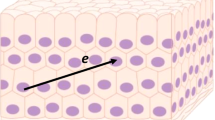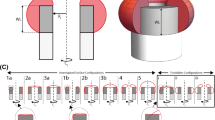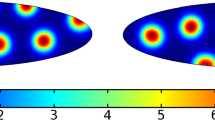Abstract.
In this paper a general mathematical framework is developed to describe cases of fixed and moving growth surfaces. This formulation has the mathematical structure suggested by Skalak (1981), but is extended herein to include discussion of possible singularities, incompatibilities, residual stresses and moving growth surfaces. Further, the general theoretical equations necessary for the computation of the final form of a structure from the distribution of growth velocities on a growth surface are presented and applied in a number of examples. It is shown that although assuming growth is always in a direction normal to the current growth surface is generally sufficient, growth at an angle to the growth surface may represent the biological reality more fully in some respects. From a theoretical viewpoint, growth at an angle to a growth surface is necessary in some situations to avoid postulating singularities in the growth velocity field. Examples of growth on fixed and moving surfaces are developed to simulate the generation of horns, seashells, antlers, teeth and similar biological structures.
Similar content being viewed by others
Author information
Authors and Affiliations
Additional information
Received 20 February 1996; received in revised form 15 October 1996
Rights and permissions
About this article
Cite this article
Skalak, R., Farrow, D. & Hoger, A. Kinematics of surface growth. J Math Biol 35, 869–907 (1997). https://doi.org/10.1007/s002850050081
Issue Date:
DOI: https://doi.org/10.1007/s002850050081




